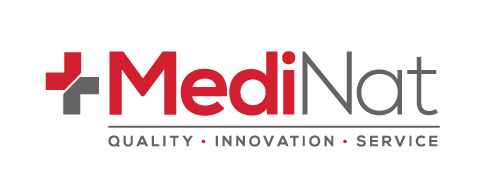
What Australian Employers Need to Know About Drug Testing Standards
Share
Implementing an effective workplace drug and alcohol testing program is a crucial part of maintaining a safe and productive work environment, especially in safety-sensitive industries. But it’s not enough to simply test employees. Your program must also align with industry recognised drug testing Australian standards.
While these are not laws in themselves, many regulators and employers refer to them as the benchmark for testing accuracy, fairness, and integrity. In this article, we explain what these standards are, why they matter, and how employers can ensure their drug testing programs comply.
What Are the Relevant Australian/New Zealand Standards for Drug & Alcohol Testing?
In Australia, several Australian/New Zealand Standards (AS/NZS) are used to guide workplace drug and alcohol testing procedures:
1. AS/NZS4308:2008
Procedures for specimen collection and the detection and quantitation of Drugs of Abuse in Urine
This standard outlines how to collect and test urine samples in a way that ensures accurate and legally defensible results. It covers everything from collection site procedures to chain of custody, test cut-off levels, and confirmatory testing protocols.
2. AS/NZS4760:2019
Procedures for specimen collection and the detection and quantitation of Drugs in Oral Fluid
This newer standard applies to oral fluid (saliva) testing, a method increasingly used due to its convenience and ability to detect recent use. It defines acceptable collection methods, detection levels, and testing procedures to ensure consistent, reliable outcomes.
3. AS3547:2019
Breath Aalcohol Testing Devices
This standard ensures that breathalysers used for alcohol testing meet performance, calibration, and reliability benchmarks. Employers should check that their devices comply with this standard to avoid disputes or incorrect readings.
Are These Standards Legally Required?
It’s important to note that these Australian Standards are not legislation. However, in many industries (eg: mining, transport, and aviation) employers are either required by regulators or expected under safety guidelines to adhere to these standards.
Even in unregulated industries, courts and industrial tribunals may refer to these standards when assessing the fairness and validity of a workplace drug testing program.
For example, if a disciplinary case reaches the Fair Work Commission, a test that didn’t follow AS/NZS4308 or AS/NZS4760 may be deemed unreliable or unfair.
Why Adhering to Standards Matters
Reliability: Standard-compliant procedures reduce the risk of false Positives or Negatives.
Defensibility: If challenged, your testing program will stand up better under scrutiny.
Fairness: Ensures all employees are treated consistently and ethically.
Reputation: Demonstrates professionalism and commitment to Workplace Safety.
Practical Steps to Ensure Your Drug Testing Meets Australian Standards.
Use compliant test kits
Ensure all urine, saliva, or breath testing kits are certified or validated to the relevant Australian/New Zealand Standard. Ask suppliers for compliance documentation.
Implement clear procedures
Develop internal policies and procedures that reflect the collection, handling, and reporting protocols set out in AS/NZS4308:2023 or AS/NZS4760:2019.
Partner with qualified providers
If outsourcing testing, ensure the provider conducts testing in accordance with these standards and uses accredited laboratories for confirmatory tests.
Train staff properly
Collection staff should be certified in HLTPAT005 Collect Specimens for Drugs of Abuse Testing, with skills to conduct a drug and alcohol test, chain-of-custody handling and compliant collection techniques.
Audit and review
Regularly review your program to ensure ongoing compliance as standards and technologies evolve.
Frequently Asked Questions
What are the terms used in drug testing?
There are many terms used to explain the outcome of a test. To simplify things, you only need to understand three terms.
Negative Drug Test Result
Negative is used when nothing is detected in the oniste drug test kit, or the GCMS/LCMS confirmation test.
Not-Negative Drug Test Result
Not-negative is the term used at a screening test by either urine or saliva device. If a drug is present, according to these instant devices, the collected samples need to be further tested at a laboratory using either GCMS or LCMS to confirm. At the screening stage, the term positive should not be used, as any preliminary test is presumptive in nature.
Positive Drug Test Result
The term positive can only be used with confirmation testing results using either a GCMS (Gas Chromatography–Mass Spectrometry) or LCMS (Liquid Chromatography– Mass Spectrometry). Under AS4308 and AS4760, you cannot say a result is positive at a screening test, until it has been through a confirmation test either at a laboratory or a specialised on-site test equipment.
Need Support with Your Workplace Testing Program?
Navigating compliance with drug testing Australian standards can be complex, but it doesn’t need to be overwhelming.
Medinat supplies a wide range of high-quality, standard-compliant drug and alcohol testing kits. We also provide support and guidance to help you meet your safety obligations confidently.
Ready to take the next step?
Order online today: Browse our complete range of certified urine, saliva and breathalsyer test kits and have them delivered directly to you.
Shop now for Urine Test Kits Saliva Test Kits Breathalysers
Speak to an Expert: Call our team for professional advice on an effective and compliant testing program.
Call: 1300 725 520
Email: sales@medinat.com.au
Online: Contact service click here
Want to know more?
Download our free Reference Magazine for an in-depth look at testing methods, compliance tips, and best practices. It’s a valuable resource for any employer planning or refining a workplace testing program.
